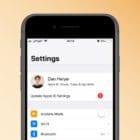Encountering a white screen on your Mac can be a daunting experience, especially when it refuses to start or boot up as expected. This phenomenon, often referred to as the “white screen of death,” leaves many users puzzled and anxious about the health of their device and the safety of their data. Whether you’re facing this issue for the first time or have encountered it before, understanding the root causes and knowing how to address them is crucial.
Related Reading
This article aims to demystify the white screen problem on Macs, offering step-by-step guidance on how to troubleshoot and resolve the issue. From simple fixes to more complex solutions, we’ll explore a range of strategies to get your Mac up and running again, ensuring you can return to your work or personal projects with minimal disruption.
Contents
Fix Your Mac’s White (or Gray) Screen: Check Your Peripherals
A straightforward method to diagnose any issues you’re encountering is to detach all connected peripherals. This category encompasses devices such as docking stations, USB dongles, Ethernet cables, among others. To delve deeper into troubleshooting, you might consider unpairing all Bluetooth devices connected to your Mac. Below, we outline various approaches for accomplishing this.
- macOS Big Sur and earlier:
- Hold the Option + Shift keys on your keyboard.
- Click the Bluetooth icon in the Menu Bar.
- From the drop-down menu, click Remove all devices.
- Restart your Mac.
However, for Mac users operating on macOS Monterey or later versions, the Option + Shift shortcut no longer functions as it previously did. Although this key combination still allows you to access a detailed view of your connected devices, it lacks the functionality to reset the Bluetooth module or remove all devices simultaneously. As an alternative, you’ll need to navigate to the Bluetooth settings in System Preferences and manually disconnect each Bluetooth device.
After successfully removing and disconnecting all devices, begin to reconnect them individually. This process helps in pinpointing the specific device that may be triggering the issues, allowing for a more targeted approach to solving the problem.
Try to Safe Boot Your Mac
Safe Mode, alternatively referred to as “Safe Boot,” serves as a diagnostic toolkit for macOS aimed at isolating software complications apart from underlying hardware malfunctions. By booting your Mac in Safe Mode, only core kernel components get loaded, preventing secondary processes and custom drivers from launching automatically.
This approach facilitates effective fault identification and rectification efforts. Entering Safe Mode involves slightly varied procedures contingent upon the model of your Mac computer. Below are detailed guidelines on initiating Safe Mode for common scenarios:
For Mac with Apple Silicon:
- Choose Apple menu > Shut Down and wait for your Mac to shut down completely.
- Press and hold the power button on your Mac until “Loading startup options” appears
- Select a volume.
- Press and hold the Shift key, then click Continue in Safe Mode.
For Intel-based Mac:
- Turn on or restart your Mac, then immediately press and hold the Shift key until you see the login window.
- Log in to your Mac. You might be asked to log in again.
Once you’re in Safe Mode, you should see “Safe Boot” in the menu bar. If you’re unsure whether your Mac started in Safe Mode, you can use the System Information app to check the mode.
Enter Recovery Mode and Run Disk Utility
Apple’s macOS is celebrated for its robustness and intuitive user experience, but it’s not uncommon for users to face installation issues. The good news is that these problems often have straightforward solutions that don’t require wiping your data clean. Understanding the nuances of a non-destructive reinstallation is key to preserving your files and settings while giving your Mac the fresh start it needs.
- Restart your MacBook, and press and hold the Command and R keys right after you hear the chime.
- Release the keys when the Utility menu appears on the screen.
- Select Disk Utility and click on Continue.
- Select your disk. For most users, it’s Macintosh HD.
- Then, click on the First Aid option.
- You may need to wait for a few seconds, or a couple of minutes until the Done button becomes clickable. Hit Done.
- Exit Disk Utility, go back to the Utility Menu, and select Reinstall OS X.
Reset PRAM or NVRAM
Resetting the NVRAM can resolve issues related to your Mac’s startup disk, display resolution, time zone, and recent kernel panic information among others. This section of the article will guide you through the steps to reset the NVRAM on your Mac as a way to potentially resolve the “macOS Could Not Be Installed on Your Computer” error.
- Shut down your Mac
- Find Command (⌘), Option, P, and R on your keyboard
- Turn on your Mac
- Press and hold the Command-Option-P-R keys immediately after you hear the startup sound
- Hold these keys until the computer restarts, and you hear the startup sound for the second time
- Release the keys.
If you have a late-2016 MacBook Pro, the steps are slightly different
How to reset NVRAM on late-2016 MacBook Pro models
- Shut down your Mac
- Find Command (⌘), Option, P, and R on your keyboard
- Turn on your Mac
- Press and hold the Command-Option-P-R keys immediately after you turn on your Mac
- Hold these keys down for at least 20 seconds to ensure that your Mac completes the process correctly
- Release the keys
Reset SMC
If your Mac has a T2 chip, shut the laptop down and wait for 30 seconds. Then press and hold Control and Option on the left side of your keyboard, and Shift on the right side. Make sure to press the three keys simultaneously for seven seconds. Then press the Power button, and keep holding all four keys for another seven seconds.
Release them, wait for 30 seconds, and then press the Power button to turn on your Mac.
If your Mac doesn’t have a T2 chip, press the Shift, Control, and Option keys on the left side of your keyboard. Then press the Power button and keep holding all four keys for 10 seconds. Release all keys, wait for 30 seconds, and then power up your device.
Using Terminal in Single User Mode or Verbose Mode
Certain advanced troubleshooting tasks on a Mac require accessing the command-line interface directly. This is where single-user mode and verbose mode come in, offering specialized environments for diagnosing and resolving deeper system-level issues.
What is Single-User Mode?
- Single-user mode boots your Mac into a text-only interface (similar to the classic Terminal).
- It disables most background processes and doesn’t load the standard graphical user interface.
- Ideal for running file system checks, repairing disk problems, and performing other low-level operations.
What is Verbose Mode?
- Verbose mode boots your Mac normally but displays detailed information about the startup process on the screen.
- This helps identify where issues might occur during boot-up, especially when related to drivers or software loading.
How to Access Single-User Mode
The method depends on whether you have an Intel-based Mac or a Mac with Apple silicon:
- Intel-based Macs:
- Power off your Mac.
- Press the power button, then immediately press and hold Command-S.
- Release Command-S when you see white text on a black background.
- Apple silicon Macs
- Power off your Mac.
- Press and hold the power button until you see “Loading startup options…”
- Click “Options” and then “Continue”.
- Enter your administrator password, when prompted.
- Select your startup disk, then hold down Shift and click “Continue in Safe Mode.”
How to Access Verbose Mode
The process is the same for both Intel-based Macs and Macs with Apple silicon:
- Power off your Mac.
- Press the power button, then immediately press and hold Command-V.
- Release Command-V when you see the Apple logo or other startup screen.
Common Uses in Terminal
Once in single-user or verbose mode, you can use Terminal commands like:
- fsck -fy: Force checks and repairs your file system (use in single-user mode)
- mount -uw / : Remounts the file system as read-write (use in single-user mode)
- Other Unix commands for advanced file management and manipulation
Exiting Single-User Mode or Verbose Mode
- Type
rebootand press Enter to restart your Mac normally.
Reinstall macOS
In the event that you’re at your wits end and just want to start from scratch, you might be able to get things working again by reinstalling macOS.
- Restart your Mac.
- Immediately press and hold one of the following key combinations for macOS Recovery:
- Command (⌘) + R: Install the latest macOS that was installed on your Mac, without upgrading to a later version.
- Option (⌥) + Command (⌘) + R: Upgrade to the latest macOS that is compatible with your Mac.
- Shift (⇧) + Option (⌥) + Command (⌘) + R: Install the macOS that came with your Mac, or the version closest to it that is still available.
- Release the keys when you see the Apple logo, spinning globe, or another startup screen.
- From the utilities window in macOS Recovery, select Disk Utility.
- Select your startup disk (usually named “Macintosh HD”) on the left, then click Erase.
- Choose a format: APFS (for SSDs) or Mac OS Extended (Journaled) for older HDDs.
- Click Erase. Close Disk Utility when the process completes.
- From the utilities window in macOS Recovery, select “Reinstall macOS” or “Reinstall OS X.”
- Click Continue, then follow the onscreen instructions. Select your disk (usually “Macintosh HD”), and click Install.
- Your Mac will restart after the installation is complete.
Make a Disk Image Backup
If nothing is helping thus far AND you able to see your hard drive when running Disk Utility from your recovery partition or internet recovery mode, consider creating a Disk Image to back up your files, especially if you’ve been neglecting to perform regular backups. A Disk Image makes an exact copy of your original HD.
- Go to your Applications folder, then to Utilities, and open Disk Utility. Alternatively, you can use Spotlight search (Cmd + Space) and type “Disk Utility” to find and open it quickly.
- In Disk Utility, on the left panel, you will see a list of available drives and volumes. Select the volume or drive you wish to create a backup of. If you’re backing up your main system, this would typically be your startup disk.
- With your source selected, click on the “File” menu at the top of the screen, hover over “New Image,” and then select “Image from [Your Volume Name].” This will open a dialog box to configure your disk image backup.
- Save As: Give your disk image a name.
- Where: Choose a location to save the disk image. It’s advisable to save it on an external drive or a secondary internal drive, not on the same disk you’re creating an image of.
- Format: Choose “Mac OS Extended (Journaled)” for a backup that will be used on Macs. If you need compatibility with Windows, you might choose “ExFAT,” but this is less common for a backup purpose.
- Encryption: You can choose to encrypt your disk image for added security. If you select encryption, you will be prompted to create a password.
- Image Format: For a disk image backup, “compressed” might save space, but “read/write” allows you to add files to the disk image later. “DVD/CD master” is less commonly used for backups.
- After configuring your disk image, click “Save” to start the process. Depending on the size of the drive and the speed of your Mac, this process can take some time.
- Once the disk image is created, you can eject it if it’s mounted. Store your external drive or wherever you saved the disk image in a safe location.
Run Apple Diagnostics or Apple Hardware Test!
Apple Diagnostics (formerly known as Apple Hardware Test) is a built-in diagnostic tool designed specifically for Mac computers. Its primary purpose is to help you identify potential hardware problems within your machine. Think of it as a checkup for the physical components of your Mac, such as the logic board, memory (RAM), wireless networking, and more.
For Apple Diagnostics (for Macs introduced in June 2013 or later):
- Disconnect all external devices except keyboard, mouse, display, Ethernet connection (if applicable), and connection to AC power.
- Ensure your Mac is placed on a hard, flat, stable surface with good ventilation.
- Turn off your Mac by choosing “Shut Down” from the Apple menu.
- Turn on your Mac and immediately press and hold the
Dkey on your keyboard. Release the key when you see a progress bar or you’re asked to choose a language. - Choose a language if prompted.
- Wait for Apple Diagnostics to finish. This process checks your hardware and might take a few minutes.
- Review the results. Apple Diagnostics will show reference codes if it finds issues.
- Take note of the reference codes and consult Apple support or an Apple Authorized Service Provider for further assistance.
For Apple Hardware Test (for Macs introduced before June 2013):
- Disconnect all external devices except keyboard, mouse, display, Ethernet connection (if applicable), and connection to AC power.
- Ensure your Mac is placed on a hard, flat, stable surface with good ventilation.
- Turn off your Mac by choosing “Shut Down” from the Apple menu.
- Turn on your Mac and immediately press and hold the
Dkey on your keyboard. If holding theDkey at startup doesn’t start Apple Hardware Test, try restarting and holding theOption+Dkeys to start Apple Hardware Test over the Internet. - Release the key when you see the Apple Hardware Test icon.
- Select your language and click the right arrow or press the Return key.
- To begin testing, click the “Test” button, press T, or press Return. Optionally, you can select “Perform extended testing” before beginning the test.
- Wait for the test to finish (this can take a while if you selected extended testing).
- Review the results. Apple Hardware Test will show a reference code if it finds an issue.
- Take note of any reference codes and consult Apple support or an Apple Authorized Service Provider for further assistance.
If you encounter any issues or need further assistance, contacting Apple Support or visiting an Apple Store or an Apple Authorized Service Provider is recommended.
Conclusion
If your Mac still refuses to boot after trying these steps, it may be time to consult with Apple Support or visit an Apple Authorized Service Provider for further diagnosis. Ultimately, understanding the potential causes and solutions for the white screen issue can empower you to tackle the problem more effectively, ensuring your Mac remains a reliable and efficient tool for your daily needs.

Obsessed with tech since the early arrival of A/UX on Apple, Sudz (SK) is responsible for the original editorial direction of AppleToolBox. He is based out of Los Angeles, CA.
Sudz specializes in covering all things macOS, having reviewed dozens of OS X and macOS developments over the years.
In a former life, Sudz worked helping Fortune 100 companies with their technology and business transformation aspirations.










YOOOOO THANKS YOU SOOOOO MUCH !!!!
I have tried everything and it boots to full progression bar then just stays there.
Thank you! Thank YOU!!!!! Verbose mode did the trick on my 2010 MacBook Pro that we had all but written off 2 years ago! Just recovered a ton of photos! Wife is going to give me literally anything I want tonight in bed!
Thank you, thank you, THANK YOU!! Resetting thr PRAM did the trick and vanquished HOURS of frustration!!
What if I cannot find the disc utlity